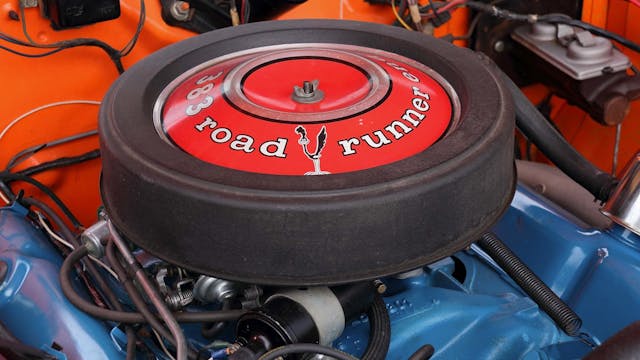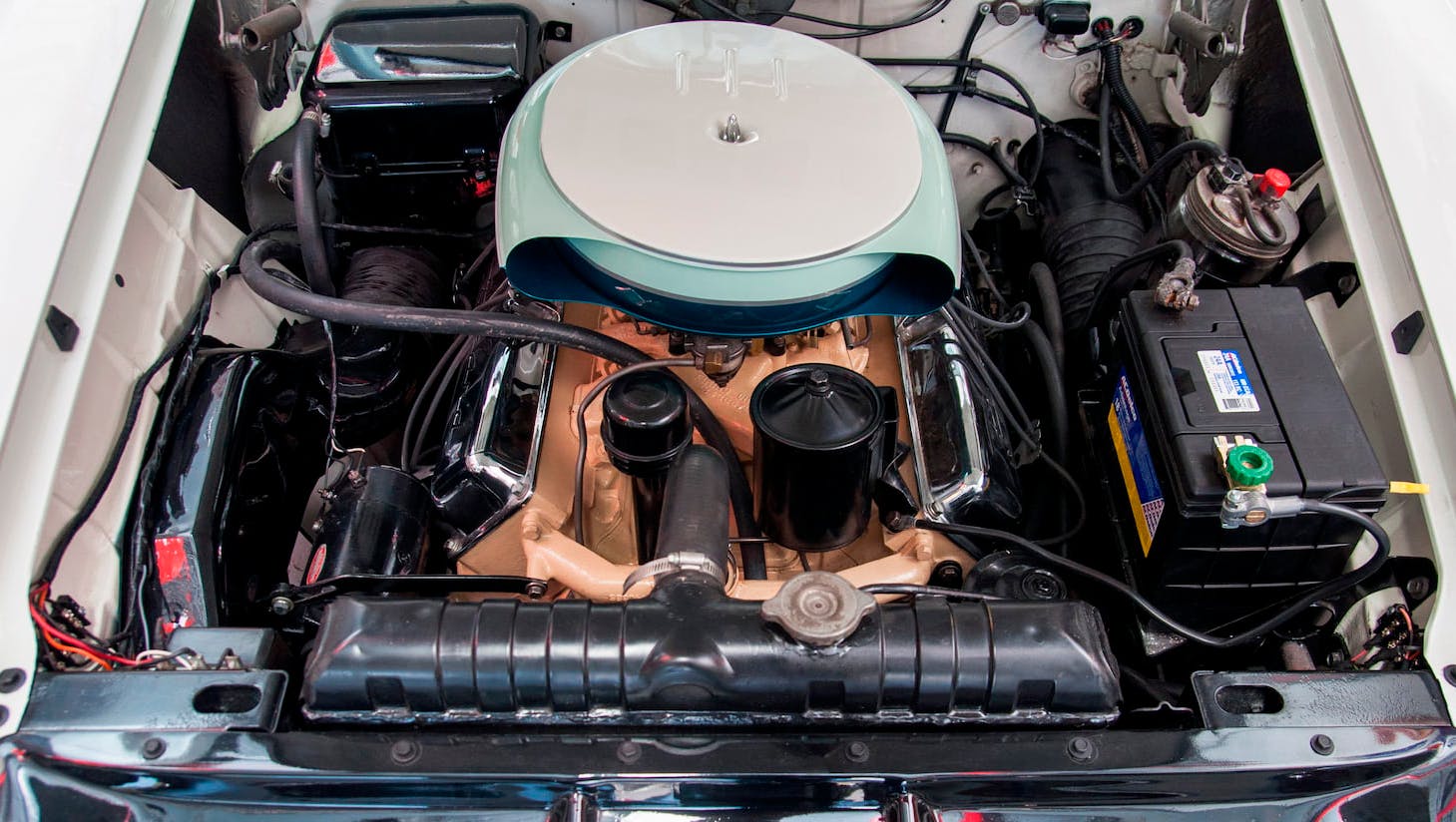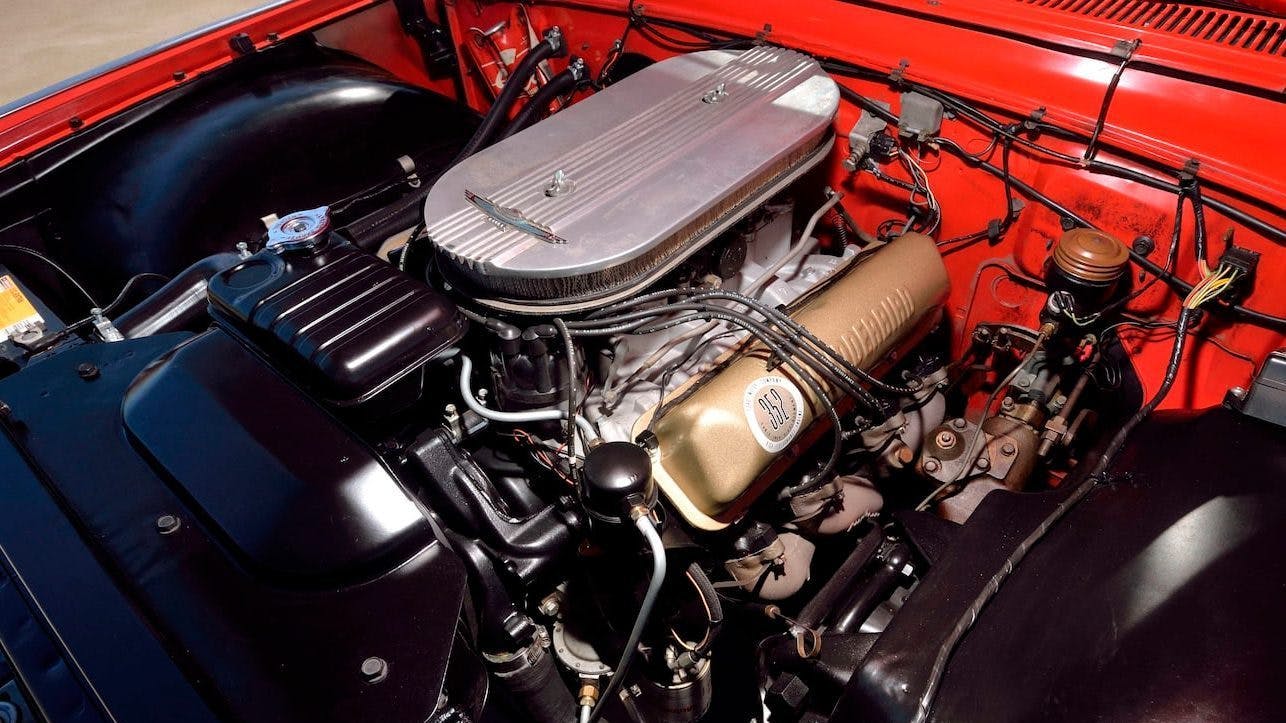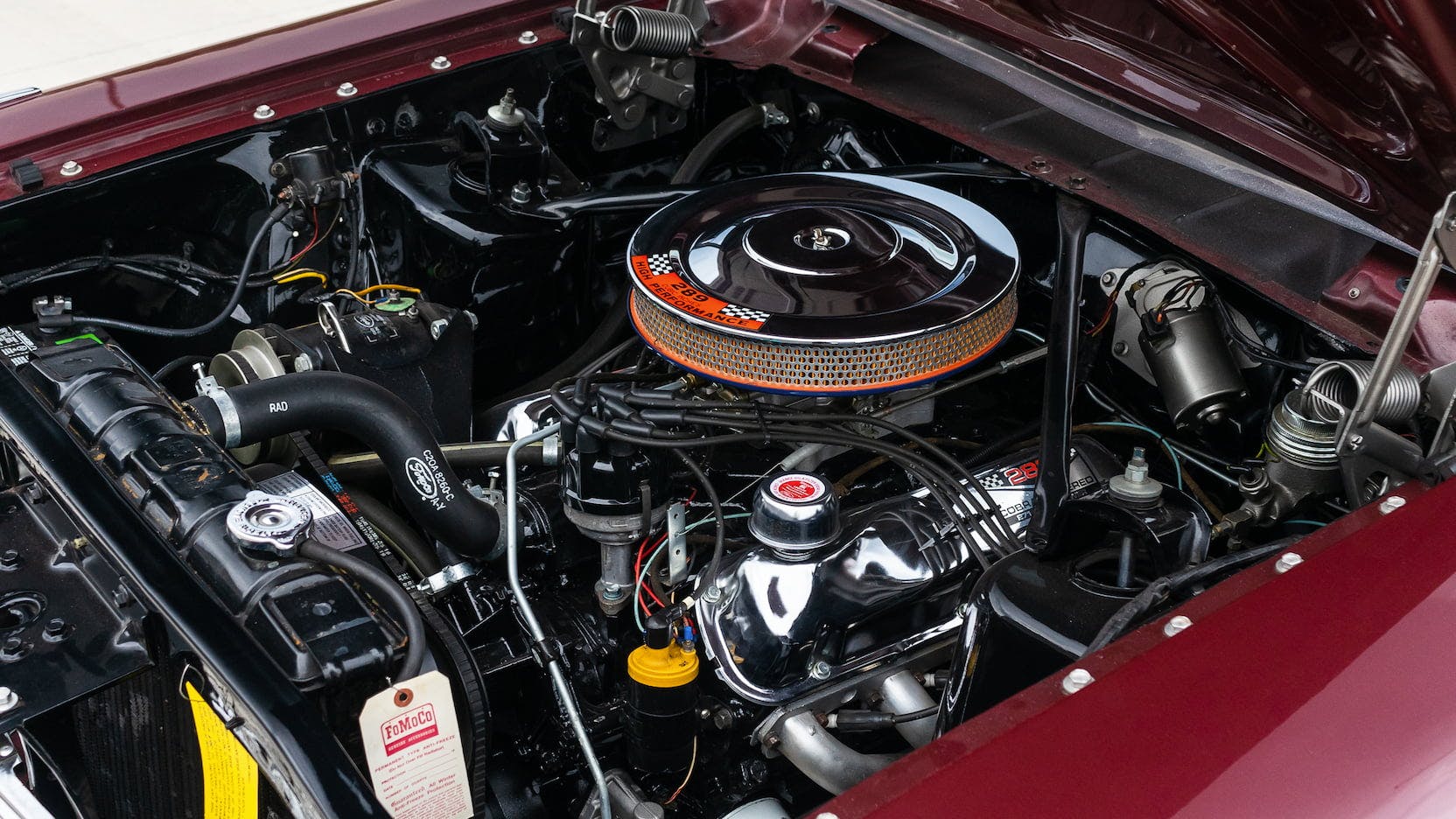V-8 pairs that share displacements but not manufacturers
If you’re an AMC owner and get tired of questions like “Why did they install a Chevy engine in an AMC?”, this story is for you. Ditto Studebaker folks who must deal with people asking about the Ford 289 in their Lark.
It wasn’t only Independents who used engines that shared displacements with a mill from another manufacturer, of course. General Motors had several 350- and 455-cubic-inch blocks over the years, though they didn’t always measure exactly as advertised, as we recently laid out in this article. Here are six engines that shared similar dimensions yet hailed from different manufacturers. We even tossed in a special Mopar example that has long confused enthusiasts.
327
Chevrolet’s 327, which powered the most pedestrian and the most sporting of Bow Ties, is legendary. However, the Chevy was preceded by Rambler’s 327, which debuted in 1957 in the celebrated Rebel. In the Rebel, the 327 put out 255 hp with mechanical lifters, a Carter four-barrel carburetor, and 9.5:1 compression. (A Bendix-developed electronic fuel-injected unit upped the rating to 288 horses but never reached production.)
The Rambler 327 also was available in swan-song Nash and Hudson models but, though it still made 255 hp, featured hydraulic lifters and slightly lower (a half-point less) compression. Alas, the limited-edition Rebel lasted but one year, though the 327 would continue to play the role of AMC’s big gun, powering American Motors’ senior Ambassador models through 1966; for 1965–66, the 327 was also available in mid-size Classic and Marlin models. Kaiser-Jeep also adopted it for several years. Peak horsepower during this era was 270 thanks to a Holley four-barrel and 9.7:1 compression.

In contrast to its Rambler counterpart, Chevrolet’s 327 was a solid middle-of-the-road offering for most of the decade. Debuting for the 1962 model year in full-size and Corvette models, the 327 evolved from the 283 and, in Chevy’s engine hierarchy, sat just below the big-blocks. It came in 250- and 300-horse variants, both of which used four-barrel carbs. In its final appearance in 1969, the 327 was only available in 235-horse, two-barrel guise.
The 327 truly shone in the Corvette. In addition to the 250- and 300-horse pair, Chevrolet also offered 340- or 360-hp versions, the latter sporting fuel injection. Horsepower peaked in 1965 with the 375-horse Fuelie, but the 1965–68 L79 with 350 horses was a popular compromise between horsepower and drivability.
The L79 was also available in the 1965–68 Chevelle (strangely skipping the ’66 model year) and the 1966–68 Chevy II, though the lesser, four-barrel versions were available too.
352
The styling worn by Packard’s all-new 1951 series’ quickly became outdated, and the brand’s dependence on its straight-eight was similarly out of touch with the times. When the redesigned 1955 models hit the streets, they signified more than just redemption—though history would prove that the vehicles arrived too late to save the company. The V-8 available in 1955 Clippers Customs and senior Packards measured 352 cu-in and was rated at 245–275 horsepower; the highest-rated versions used dual-quad carbs for ’55. The 352 also appeared in the 1956 Clipper, Nash Ambassador, and Studebaker Golden Hawk.
Worthy of the best Packard tradition, the over-engineered 352 featured, according to Mac’s Motor City Garage, “a beefy cast crankshaft with six counterweights, fully machined combustion chambers with generous squish/quench area, and symmetrical cylinder heads with siamesed exhaust ports.”
In contrast, Ford’s 352 began as a solid big-block in the all-new FE series but settled into an unremarkable offering though 1966. When it first appeared in 1958, the 352 produced 300 hp; in 1960, Ford offered a 352 with NASCAR in mind: 10.6:1 compression, an aluminum intake, mechanical lifters, and 360 hp. However, a succession of 390, 406, and 427 upgrades through 1963 relegated the 352 to a popular-yet-ho-hum big-block in the low/mid-200-hp range until 1966.
289
Studebaker’s 1951 232 V-8 has a burly reputation, which is ironic given that its engineers drew their inspiration for the 232 from Cadillac’s high-compression, lightweight 1949 OHV V-8. (Studebaker engineers were even allowed to visit Caddy’s production facilities.) The 232 boasted a forged crankshaft, large main bearings, mechanical lifters, and a gear-driven camshaft. By 1956, Studebaker had bored and stroked the mill to create the 289, which offered between 195 and 225 horsepower. In 1957–58, the Golden Hawk featured a supercharged 289 with 275 horses. Not until 1963, however, did Studebaker truly give the 289 an injection of performance: The 240-horse R1 (standard in the Avanti) with 10.25 compression, and the supercharged 289-horse R2, with 9.0 compression. These engines, as well as the more pedestrian 289s, lasted until Studebaker abandoned South Bend for Canada, but not before it set several speed records.
In contrast, Ford’s modern, thin-wall 289 weighed approximately 150 pounds less than Studebaker’s. It appeared in the spring of 1963 after debuting as a 221 for the 1962 Fairlane. With 8.7 compression and a two-barrel carburetor, the 289 was rated at 195 hp, though it rose to fame as the 271-horse 289 High-Performance introduced midyear for the ’63 Fairlane. This engine, available for Ford and Mercury compacts and the Mustang through 1967, featured 10.5 compression, mechanical lifters, screw-in rocker-arm studs, cast-iron headers, and dual-point ignition. The 289 (mostly in two-barrel form) enjoyed widespread popularity in compact, mid-size, and pony-car Fords and Mercurys, plus full-size Fords, though 1968. The 289’s high point was the 306-horse 1965–67 Shelby GT350, with an optional supercharger adding another 80 or so horses in 1966–67.
Bonus round: 383
OK, so these two engines are not technically “brothers from another mother.” The Chrysler Corporation offered two big-blocks with identical displacements that hailed from similar-yet-different series. The first 383 to appear was in 1959–60 when Chrysler replaced the first-generation Hemi. As part of the RB (raised block) series, the 383 appeared only in lower-line U.S.-spec Chrysler models, with either 305 or 325 horsepower depending on carburetion. After that, Chrysler used the 361 and B-series 383 for lesser Chryslers.

That B-series 383 became the evergreen big-block that powered many Mopars throughout the decade and was later made famous by the 1968 Plymouth Road Runner. Compared to the RB 383, the B-series 383 featured a different 4.25 x 3.38 bore and stroke and lacked the raised block. It first appeared as one of two D-500 options for 1959 Dodges (with 320–345 horsepower, the highest-rated boasting dual quads). Ram induction appeared the following year yielding 330 hp, a configuration which was also available on the ’60 DeSoto and ’61 “Sonoramic Commando” Plymouth. A 343-horse cross-ram version of the 383 was available for Dodges and Plymouths in 1962, and then there was little effort to pump up the 383 until the Road Runner in ’68. After 1971, the 383 was replaced by the 400.
Can you think of other engines from different OEMs that shared similar dimensions? Post them in the community below, and we’ll perhaps gather enough examples for another iteration of this engine-geek investigation.







Hello: This is a great feature, but please expand it to include the AMC and Ford 390s, the AMC and International 304s, and even the Buick and Mopar 340s. Thanks!
Don’t forget that Cadillac and Ford had 390s AND 429s.
Mercury offered a 383 engine in 1958
Ford & Pontiac offered 428’s
Chevy & FoMoCo offered 427’s
AMC 360-2V and Mopar 360-2V. I have both.
They both had 4 barrel offerings of the 360
Let’s not forget that both Ford and Chevy had a 302…or that Ford, Chevy, & MOPAR all had 400’s…or that (although all GM) Pontiac, Buick, Olds, and Chevy had completely different 350’s… or that GMC & Chevy had 305’s (but one was a v6 & badass, and one was a v8 & trash)…